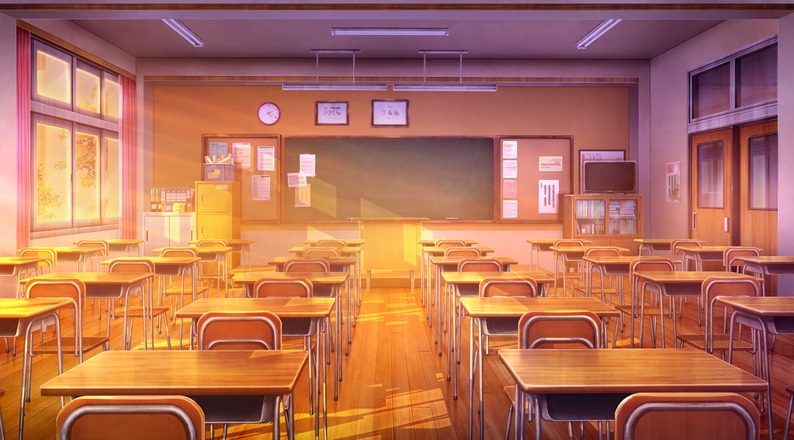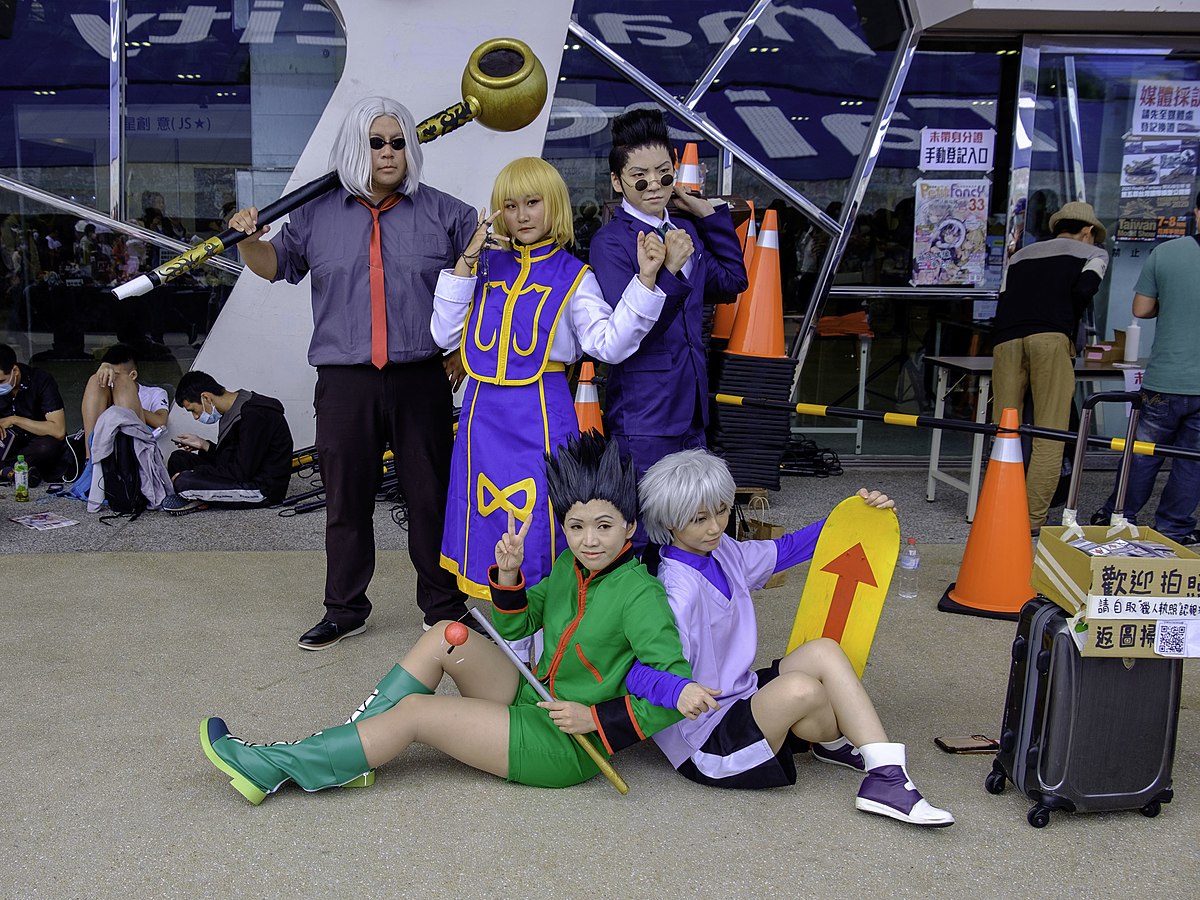Have you ever found yourself completely lost in the fascinating world of anime? You know, those Japanese animations that take you on wild rides through futuristic cities, mystical realms, or even the ups and downs of high school life. Aside from being a genre, anime is also a doorway to a whole new world of storytelling, packed with lively characters and stories that stick with you long after the screen goes dark. It’s captivating, really, how this art form from Japan has exploded in popularity all across the globe, isn’t it?
But have you ever wondered how Japanese anime started and how it became popular around the world? Let’s dive into this a bit more. Imagine sitting down for a quick episode, and the next thing you know, you’re binge-watching an entire series, completely hooked. That’s the magic of anime. From epic battles and heartfelt dramas to quirky, everyday adventures, there’s an anime out there for everyone.
In this article, we are going to explore the vibrant universe of anime, where imagination knows no bounds. As we explore, we will discover why it has become a beloved part of pop culture far beyond its Japanese origins.
The Rise of Anime in Japan
The Roots of Japanese Animation
The history of anime in Japan can be traced back to the early 20th century when experimentation with animation techniques began. The earliest known Japanese animation dates back to 1917, featuring simple, folk tale-based shorts like “Namakura Gatana” and “The Dull Sword.” These early animations were heavily influenced by Western styles, particularly from France and the United States, but were distinct in their incorporation of Japanese artistic elements.
The Pre-War Era of Anime
During the 1920s and 1930s, the anime industry in Japan slowly began to grow. Animation during this period was primarily theatrical and often served as a means of propaganda during the militarization leading up to World War II. Despite the challenges, these years were crucial in establishing the foundational techniques and storytelling styles that would later define anime.
Post-World War II: A New Direction for Anime
The post-war era marked a significant shift in Japanese animation. With the country’s recovery and the American occupation, there was a cultural shift that led to new themes and stories in animation. This period saw the rise of artists like Osamu Tezuka, who is often referred to as the “God of Manga” and the “father of anime.” His works and unique style would deeply influence the future of anime.
The Birth of Modern Anime
In 1963, Osamu Tezuka’s “Astro Boy” (Tetsuwan Atomu) was adapted into a television series, marking the birth of what we now recognize as modern anime. This was the first instance of the now-standard practice of serializing popular manga in animated form. “Astro Boy” was a breakthrough in terms of production quality and set a new standard for storytelling in animation, featuring more complex narratives and well-developed characters.
The 1980s: The Golden Age of Anime
The 1980s are often regarded as the golden age of anime, a period that saw significant artistic and commercial successes. This era introduced the world to many of Japan’s most iconic anime franchises. Films like Hayao Miyazaki’s “Nausicaä of the Valley of the Wind” and Katsuhiro Otomo’s “Akira” pushed the boundaries of what could be achieved in animation, both in terms of visual artistry and narrative depth.
The Diversification of Anime in the 1990s
The 1990s saw an explosion of diversity in anime genres, catering to various audience segments. This decade brought to life legendary series like “Neon Genesis Evangelion,” “Sailor Moon,” and “Dragon Ball,” each contributing to the global anime phenomenon in unique ways.
Anime in the 21st Century
The turn of the millennium saw anime firmly established as a global cultural force. The proliferation of the internet and the advent of online streaming services have made anime more accessible than ever, contributing to its growing popularity worldwide. Anime continues to evolve, experimenting with new styles, themes, and storytelling techniques.
Anime Goes International
The remarkable tale of how Japanese anime transcended its national confines to captivate a global audience is both fascinating and instructive. Initially rooted deeply in Japanese culture, anime’s journey to international acclaim is a testament to its universal appeal and storytelling prowess.
Initial Forays into International Markets
The first instances of anime reaching foreign shores occurred in the 1960s and ’70s, with pioneering shows like “Astro Boy” and “Speed Racer” making their way onto television screens in the United States and beyond. These early exports were often significantly edited to align with local broadcasting regulations and cultural norms, yet they managed to plant the seeds of interest in Japanese animation among international audiences.
The 1980s and 1990s: A Surge in Popularity
The late 20th century marked a significant turning point in anime’s global presence. Seminal series such as “Dragon Ball,” “Sailor Moon,” and “Pokémon” broke through cultural barriers, captivating viewers across different continents. These shows, characterized by their engaging narratives and distinctive art style, appealed to a broad demographic, from children to adults, thereby widening anime’s global footprint.
The Cinematic Influences of Anime
Anime’s venture into the global scene was not confined to television. The international film circuit became a crucial platform for showcasing anime’s artistic merit. Groundbreaking films like “Akira” and Studio Ghibli’s “Spirited Away” and “My Neighbor Totoro” garnered critical acclaim at film festivals worldwide. These cinematic masterpieces transcended the traditional perception of animation, highlighting its potential as a serious and profound art form.
Embracing New Technologies and Platforms
The advent of the internet and digital streaming services in the late 1990s and early 2000s played a pivotal role in propelling anime to global fame. Platforms like Crunchyroll and Netflix made anime more accessible to international audiences, offering a diverse catalog of anime titles across various genres.
The digital era also facilitated the creation of a vibrant online community of anime fans. Discussion forums, fan websites, and social media played a significant role in fostering a global community of anime enthusiasts, further driving its popularity.
Breakthrough Anime Series and Films
The global ascent of anime is marked by several key series and films that not only captivated audiences in Japan but also made significant inroads internationally. Aside from being popular entertainment, these works are also landmarks in the evolution of anime as a global phenomenon.
Iconic Series that Captured the World’s Imagination
- “Dragon Ball” Series: This action-packed series, based on Akira Toriyama’s manga, became a global sensation. Its epic storytelling, memorable characters, and exciting fight sequences resonated with viewers of all ages.
- “Sailor Moon”: A trailblazer in the magical girl genre, “Sailor Moon” appealed to a broad audience with its themes of empowerment, friendship, and romance.
- “Pokémon”: Initially a video game, Pokémon’s adaptation into an anime series saw its popularity skyrocket worldwide, leading to a multi-media franchise including movies, merchandise, and more.
Films that Redefined Anime
- “Akira” (1988): Katsuhiro Otomo’s dystopian masterpiece was pivotal in introducing anime to adult audiences globally, admired for its intricate plot and stunning animation.
- Studio Ghibli Films: Hayao Miyazaki’s works, especially “My Neighbor Totoro” (1988) and “Spirited Away” (2001), brought a new level of artistic and narrative depth to anime. Spirited Away’s Oscar win for Best Animated Feature was a significant milestone, highlighting the global recognition of anime.
The success of these series and films can be attributed to their diverse genres and themes, which appealed to a wide range of demographics. From action and adventure to fantasy and romance, anime offered something for every viewer, contributing to its widespread appeal. These breakthrough anime series and films did not just entertain but also influenced filmmakers and artists globally. Their unique visual style, narrative structures, and character archetypes inspired a new generation of content creators in various media formats.
Anime’s Influence on Global Pop Culture
The impact of anime on global pop culture extends far beyond the screens where it’s viewed. This Japanese art form has woven itself into the very fabric of international media and entertainment, influencing various aspects of popular culture around the world.
- Influence on Western Animation: Anime has significantly influenced Western animation styles and storytelling techniques. Many Western animators have adopted anime’s dynamic action sequences, detailed character expressions, and complex storylines.
- Inspiration for Film and Television: Major Hollywood movies and TV shows have drawn inspiration from anime, both in visual style and narrative elements. The Wachowskis’ “The Matrix” series, for instance, is renowned for its anime-inspired action and philosophies.
- Anime’s Impact on Fashion: Anime has made its mark on global fashion trends. Clothing lines, accessories, and hairstyles inspired by anime characters have become popular, reflecting the influence of anime aesthetics.
- Artistic Influence: The distinct visual style of anime, with its emphasis on expressive, exaggerated features and vibrant colors, has influenced artists and designers across various fields, leading to a fusion of styles and ideas.
- Anime Music on Global Charts: Anime soundtracks and theme songs, often featuring J-Pop and J-Rock artists, have gained international popularity, with some tracks making it onto global music charts.
- Concerts and Performances: Music from anime has led to concerts and live performances, further spreading its influence in the music industry.
- Fandom and Subcultures: The rise of anime has fostered a global community of fans who share a passion for this genre. Anime conventions, cosplay events, and fan clubs are a testament to its far-reaching impact. Anime has also made a significant imprint on internet culture, inspiring memes, fan art, and online discussions, thereby creating a vibrant and interactive community.
- Video Game and Virtual Reality: The video game industry has been heavily influenced by anime, both in visual style and narrative design. Many games feature anime-inspired characters and storytelling, appealing to fans of both mediums. Anime’s futuristic themes have also influenced the development and aesthetics of virtual reality experiences, blurring the lines between anime fiction and technological reality.
The influence of anime on global pop culture is profound and multifaceted. By transcending cultural and linguistic barriers, anime has become a ubiquitous presence in various forms of media and entertainment. Its impact on global pop culture not only demonstrates the universal appeal of its storytelling and artistry but also highlights the dynamic nature of cultural exchange in the modern world.
Criticism and Challenges
While anime has enjoyed global success and acclaim, it has also faced its share of criticism and challenges. These issues provide a more nuanced understanding of the medium and its place in the global entertainment landscape.
- Cultural Appropriation and Misrepresentation: As anime has spread across diverse cultures, it has sometimes been accused of cultural appropriation. This is particularly evident when non-Japanese creators adopt anime styles and themes without a deep understanding or respect for the original culture. Conversely, there is also concern about how anime portrays Japanese culture to international audiences, potentially leading to stereotypes or misconceptions.
- Handling of Sensitive Themes: Anime is known for exploring a wide range of themes, including those that are mature or sensitive. However, this has led to controversy, especially regarding its handling of violence, sexual content, and depiction of minors. These controversies often result in censorship or calls for stricter regulation of anime content, both in Japan and internationally.
- Industry–Specific Challenges: Illegal downloading and streaming of anime series and films have significant financial impacts on the creators and distributors. This piracy not only affects revenue but also poses a threat to the sustainability of the industry. Also, the anime industry in Japan is notorious for its demanding work conditions, including long hours and low pay for animators. This has raised concerns about the welfare of the creators, who are the backbone of the industry.
- Market Saturation and Creative Stagnation: With the rising popularity of anime, there is a concern about the oversaturation of the market, which can lead to a decrease in the overall quality of the content. As certain anime styles and narratives become commercially successful, there is a risk of creators resorting to formulaic content, potentially stifling creativity and innovation.
The criticisms and challenges facing anime are part and parcel of its journey as a global cultural phenomenon. Addressing these issues is essential for the continued growth and evolution of anime. By engaging with these critiques and working towards resolving the challenges, the anime industry can ensure a sustainable and respectful future, both in terms of content creation and cultural impact.
Conclusion
In conclusion, anime’s journey from a niche Japanese art form to a global cultural phenomenon is a story of remarkable creativity, innovation, and resilience. While it has captivated audiences worldwide with its unique storytelling and artistic styles, anime also faces its share of challenges and criticisms. These aspects are crucial for the medium’s continued growth and evolution. Understanding and addressing these challenges will not only sustain the industry but also enrich the global cultural landscape. As anime continues to evolve, its influence and legacy remain a testament to the power of animation in bridging diverse cultures and bringing stories to life. After delving into the rich history of animated TV shows and their cultural significance, take a closer look at how global influences have shaped the animation industry. How Has Anime Influenced Western Animation Styles?, offers an insightful exploration into the profound impact of Japanese anime on Western animation, showcasing the cross-cultural exchange that has led to innovative styles and storytelling techniques.





